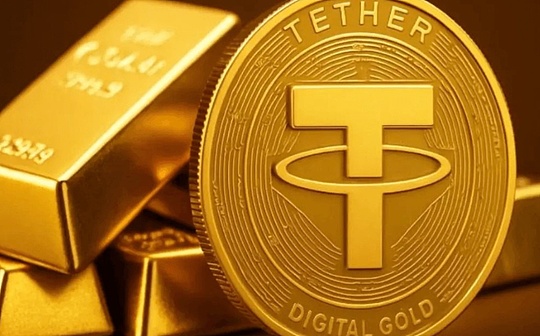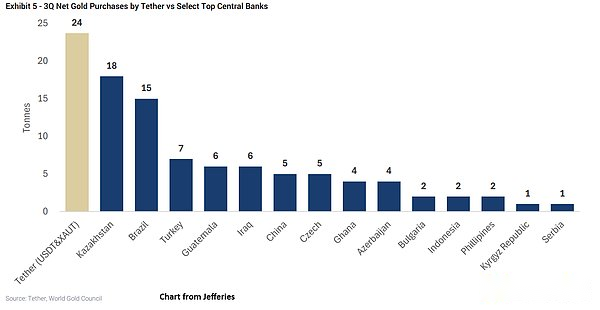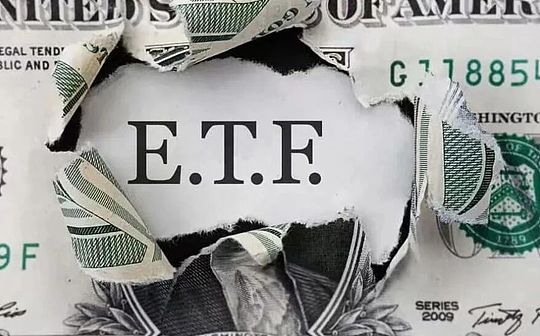
Author: Zhao Ying, Wall Street News
When investors viewed gold as a safe-haven asset and bought heavily, they may not have expected that one of the key buyers that pushed gold prices to record highs this year was actually Tether, the most controversial stablecoin issuer in the cryptocurrency world.The digital asset giant’s gold purchases once exceeded those of the central bank and are reshaping the supply and demand pattern of traditional safe-haven assets.
According to media reports on Thursday, calculations by investment bank Jefferies showed that as of September 30, Tether, the issuer of the world’s largest stablecoin USDT, held 116 tons of gold, worth approximately US$14 billion, making it the largest single holder of gold outside of major central banks, with holdings equivalent to the official reserves of countries such as South Korea, Hungary or Greece.In the third quarter alone, Tether purchased approximately 26 tons of gold, accounting for 2% of total global gold demand during the period and equivalent to 12% of known central bank purchases.

The discovery reveals the hidden forces behind a 56% surge in gold prices in 2025.The price of gold has risen by about US$2,000 in two waves this year. The second wave of rise coincides with the acceleration of Tether’s gold purchase.Jefferies noted that demand for Tether “may have tightened supply and affected market sentiment in the short term, driving speculative inflows.”
But the deep intertwining of cryptocurrencies with traditional safe-haven assets also creates hidden dangers.If demand for stablecoins suddenly reverses, the gold reserves that support their value will surely face selling pressure.For investors who bought gold as a hedge against debt or tech bubbles, they now need to ask: Has gold itself become frothy in the process?
Crypto giants become new forces in the gold market
Tether’s influence in the gold market has grown significantly this year.According to data from Jefferies, the digital asset firm’s gold purchases exceeded official central bank purchases in the two quarters ended September 30.

Gold prices have surged in two phases this year.The first wave was an increase of nearly $1,000 in the four months before April, coinciding with the impact of tariffs and a 10% decline in the dollar; the second wave was an increase of another $1,000 from mid-August to mid-October, but the dollar did not weaken further at this time.The central bank is still the largest buyer, with purchases of about 220 tons in the second and third quarters, but Tether’s role as a marginal buyer is more significant.
In the second quarter, Tether purchases accounted for approximately 14% of the central bank’s gold purchases; by the third quarter, this proportion rose to 12%.The Jefferies team pointed out that the timeline of the second round of gains is highly consistent with the acceleration of Tether’s gold purchases.The bank expects demand of this scale to continue – Tether plans to purchase approximately 100 tons of physical gold in 2025.
That goal doesn’t look difficult, considering Tether’s profits are expected to be close to $15 billion this year and the stablecoin has remained strong amid recent crypto market volatility.
Reserve allocation for dual-token strategy
Tether purchased gold to back two different tokens, which explains the complexity of its motivations.
As of the end of the third quarter, USDT stablecoin reserves with a circulating supply of $174 billion contained 104 tons of gold, with another 12 tons supporting the gold-backed token Tether Gold (XAUt).Each XAUt represents one ounce of gold. According to blockchain data, XAUt issuance has increased by more than 275,000 ounces since the beginning of August, equivalent to an increase in gold reserves of approximately US$1.1 billion.
But this strategy conflicts with new U.S. regulations.The “GENIUS Act” passed in July this year established a regulatory framework for stablecoins and explicitly prohibited compliant issuers from using gold as a reserve asset.Tether has announced plans to launch a new stablecoin, USAT, that complies with the bill and will completely abandon gold reserves.
This makes a question confusing: Why did Tether increase the proportion of USDT’s gold reserves after the bill was passed?The current gold price has fallen by more than 6% from the historical high of $4,379 set in mid-October, and Tether’s gold purchase strategy seems to be more focused on long-term layout.
Speculative risks of safe-haven assets
The intertwining of gold and the cryptocurrency ecosystem may make sense ideologically, but in practice the two behave very differently.
The common narrative between the two is concerns about over-issuance and devaluation of major currencies. Buyers claim that hoarding these two types of assets is based on “store of value” considerations because of their limited supply rather than fixed income.However, despite their explosive growth over the past decade, cryptocurrencies such as Bitcoin remain extremely volatile and highly speculative.This fall, even as anxiety over major currencies turned toward the yen, Bitcoin followed a “risk-off” sell-off in tech stocks, plunging by about a third in six weeks.
The logic of stablecoins is indeed different – their value proposition is built on a fully collateralized, instantly redeemable digital dollar.However, cyclical intense pressure in the crypto market is still the norm.If stablecoin demand reverses sharply for any reason, pressure will inevitably be transmitted to the assets supporting its peg, which now include large gold reserves.
Jefferies expects the stablecoin space to generate more gold demand.But other observers may reach a more pessimistic conclusion: The vagaries of cryptocurrencies may have injected ultra-speculative ebbs and flows into “safe-haven” gold.

The ambition and reality of tokenized gold
Tether’s enthusiasm for gold may seem at odds with the regulatory restrictions it faces, but it may reflect its long-term bet on tokenized physical gold.
For most retail investors, holding physical gold is difficult – insurance and warehousing costs are high, and self-custody is only suitable for doomsday preparers; futures have rollover costs; gold ETFs charge high management fees and set minimum investment thresholds, and T+1 settlement also brings credit risks.Tokenization promises a better way: Gold-backed cryptocurrencies can be traded 24/7, with real-time settlement, no management fees, no minimum investment, and no maintenance costs.
But so far, demand has been lacking.Tether is one of only two issuers with over $1 billion in tokenized gold, and its bridge token Alloy, launched a year ago, was quickly forgotten.XAUt token issuance shows a “concentrated large-scale issuance” model similar to USDT, with issuance volume doubling in the past six months, but these volumes are still negligible compared to the physical gold market with an average daily liquidation of approximately US$60 billion.
However, for an avowed dollar pessimist, CEO Paolo Ardoino’s grand idea may be for Tether to promote a gold-backed rather than fiat-anchored crypto value exchange system.Until then, Tether needs to convince risk-averse investors that the best way to express concerns about currency devaluation is to buy blockchain tokens from a private crypto company registered in El Salvador, which claims to have more than 100 tons of unaudited gold bars stored in an undisclosed warehouse somewhere in Switzerland.






